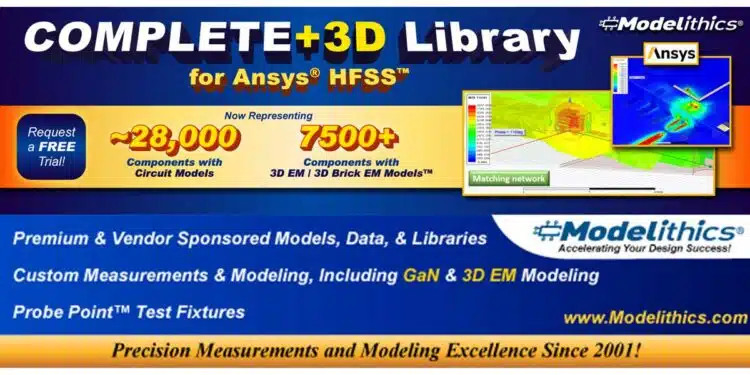Modelithics® is pleased to announce the release of v25.5 of the Modelithics COMPLETE+3D Library for Ansys HFSS™.
This release includes over 20 new models that represent approximately 1,300 components. With this release, the COMPLETE+3D Library for Ansys HFSS now represents approximately 28,000 components by way of equivalent-circuit models.
In addition, approximately 7,500 components are represented by way of 3D EM and 3D Brick EM™ models that are suitable for full-wave electromagnetic simulations. This release is compatible with Ansys HFSS 2025 R2 and is backwards compatible with older versions of Ansys HFSS. Ansys is now part of Synopsys, the leading provider of engineering solutions from silicon to systems.
This release includes new 3D EM Brick Models™ for capacitors from KYOCERA-AVX (1), Murata (4), Passive Plus (1), and Yageo (1). Modelithics 3D Brick Models for capacitors combine the best of both 3D and circuit simulation techniques. A simplified 3D model is linked through EM/Circuit co-simulation with an equivalent circuit model so that EM interactions are captured, while also allowing the flexibility to tune and optimize capacitance values. Each of these models are validated to 67 GHz.
Through the Modelithics Vendor Partner (MVP) Program, FREE 90-day use of Modelithics models for Kyocera-AVX and Passive Plus components are available. For more information or to request free use of the models for components from these and other MVPs, please visit www.modelithics.com/mvp/vsl.
For more information about this new release and further details on the new models available, please review the v25.5 release notes. To request a free trial, please visit the Modelithics website at www.modelithics.com/mvp/HFSS.
































